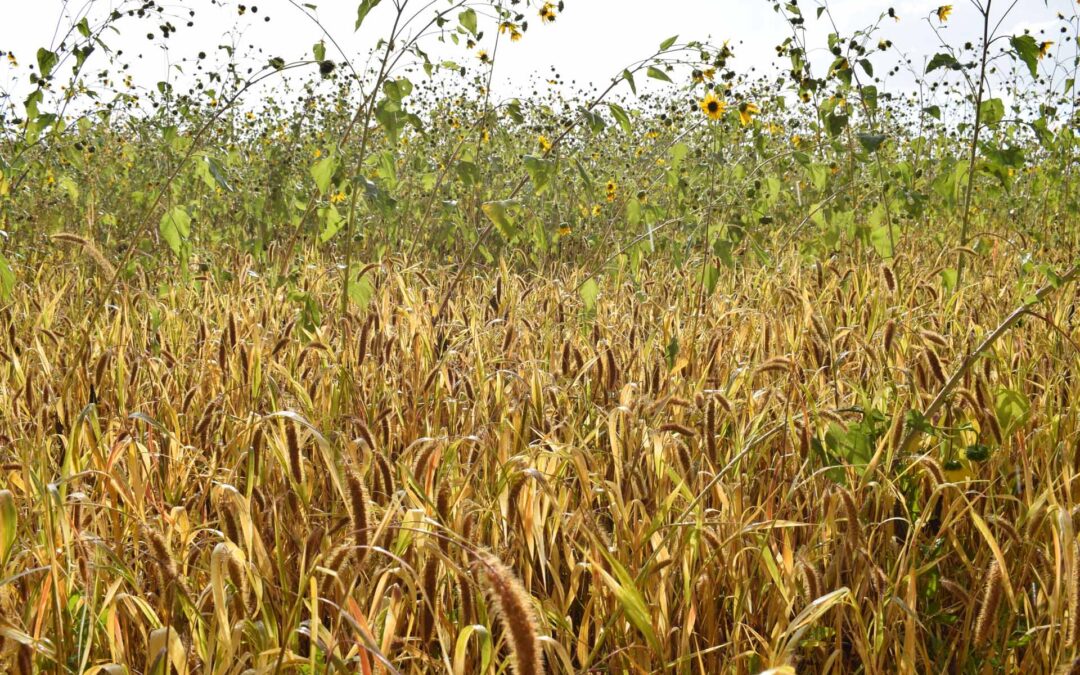Turning Historic Farmland into Habitat for the Future
Rio Grande Return is working with Ciudad Soil & Water Conservation District and the City of Albuquerque Open Space Division to transition the 100-acre Candelaria Nature Preserve from a commercial alfalfa farm into a patchwork of different native habitats currently impaired and/or missing from the Rio Grande. A few of these habitats are salt scrubland, dry soil grassland, wet soil grassland, ephemeral wetlands, sandbar habitat and Chihuahuan Desert. During this early transition phase, we are currently growing 24 acres of wildlife crops, which will provide grains for the migratory birds that travel to the Rio Grande corridor, and in 2024 we established 100% native grass cover on formerly bare soil and created two large sandbar habitats on 5 acres. Our small native plant nursery has been essential as we plant out these new habitats.
This project utilizes healthy soil principles, no-till methods, and native riparian and upland habitat. Each week we have two volunteer events to learn about these critical habitats and restoration techniques, so please come and join us! Sign up by contacting our program director Cameron Weber –
In partnership with Ciudad Soil and Water Conservation District and the City of Albuquerque, Rio Grande Return is leading the transformation of historic agricultural fields at the Candelaria Nature Preserve into a thriving, biodiverse landscape – right in the heart of the city. Using existing irrigation infrastructure and nature-based strategies, we’ve been restoring these fields since early 2021 to support native wildlife, improve soil health, and create lasting green space for future generations.
Guided by the Candelaria Nature Preserve Resource Management Plan (2019), the goal is to re-establish wetland, grassland, shrubland, and bosque ecosystems across the site. Rio Grande Return serves as the primary contractor for the implementation of this 20-year vision. Here’s how we’re making it happen:
- Using no-till cultivation to protect soil structure and health.
- Applying successional and drought-mitigating techniques to encourage native plant growth.
- Achieving near-total soil coverage while reducing invasive species.
- Creating soil conditions that naturally support native species establishment.
The result? Over 100 acres of revitalized land managed by our Habitat Conservation Program, right next to the Rio Grande Nature Center, forming a vital wildlife corridor along the river.
Who Benefits from These Rewilding Efforts?
Wildlife:
- Native plants provide nectar for pollinators.
- Seeds and cover for migratory birds.
- Food sources for rodents and raptors.
- Habitat for larger mammals like raccoons and coyotes.
Community:
- Two new wildlife viewing platforms invite quiet observation of this rewilded space.
- Monthly guided tours and weekly Friday volunteer sessions (9–11 AM) offer hands-on restoration experiences.
- Local youth and community members engage in ecological monitoring, seed collection, and plant propagation for future restoration.
The Candelaria Nature Preserve is more than a restoration project – it’s an opportunity to reconnect people with the land, the river, and the native species that call this place home. It’s being managed not just for conservation, but for education and recreation, ensuring access to outdoor spaces for all Albuquerque residents and visitors.
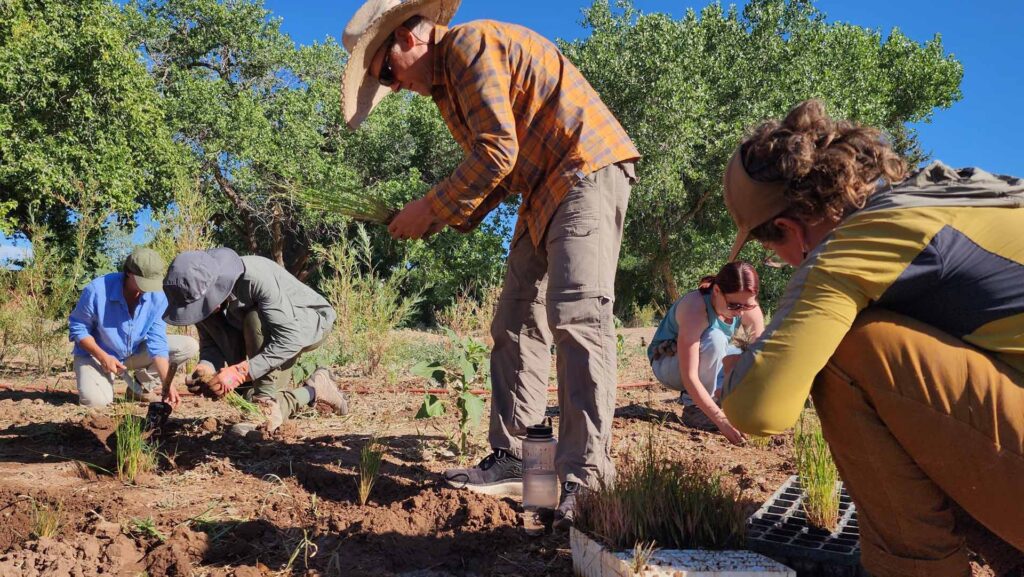
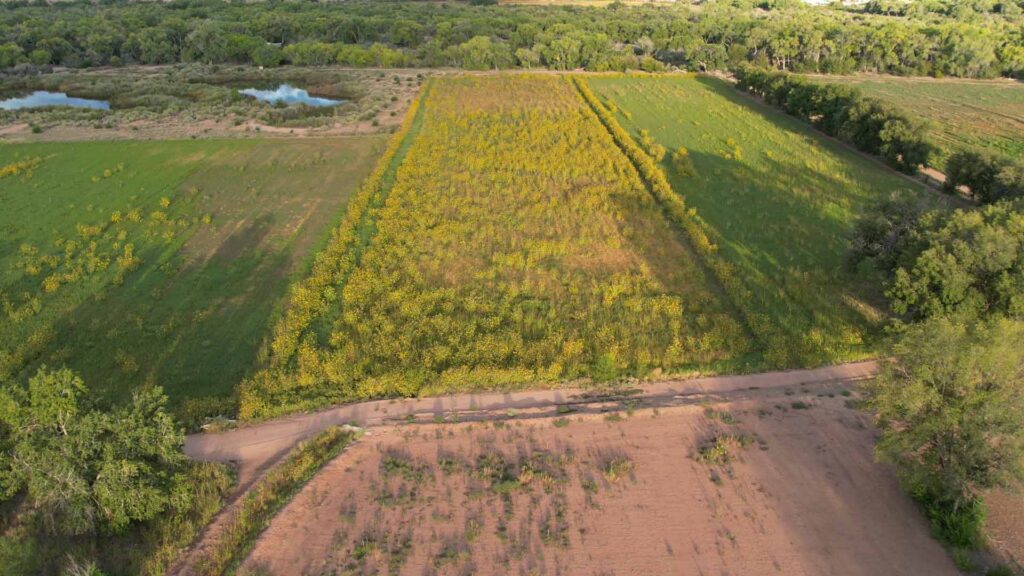
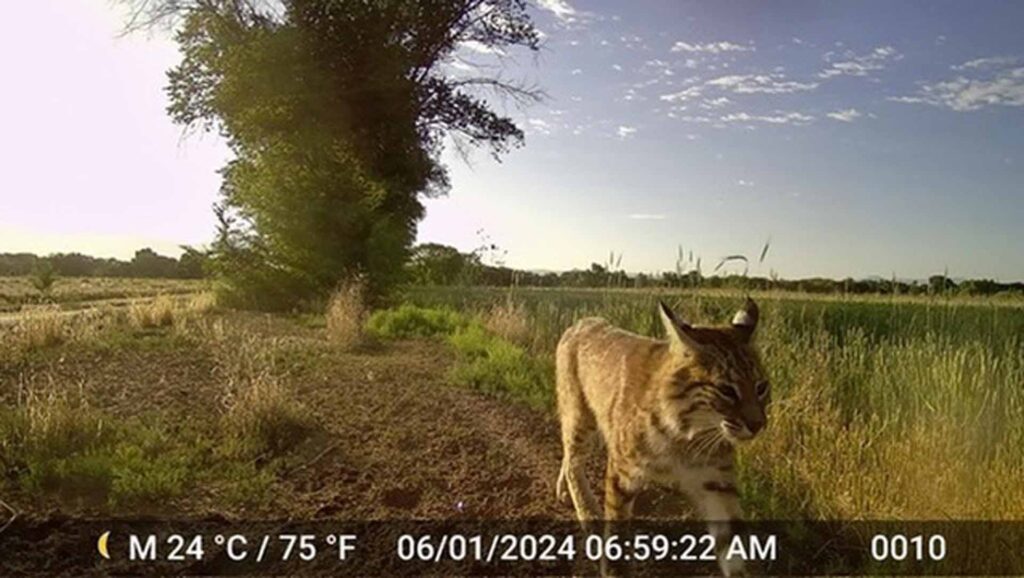
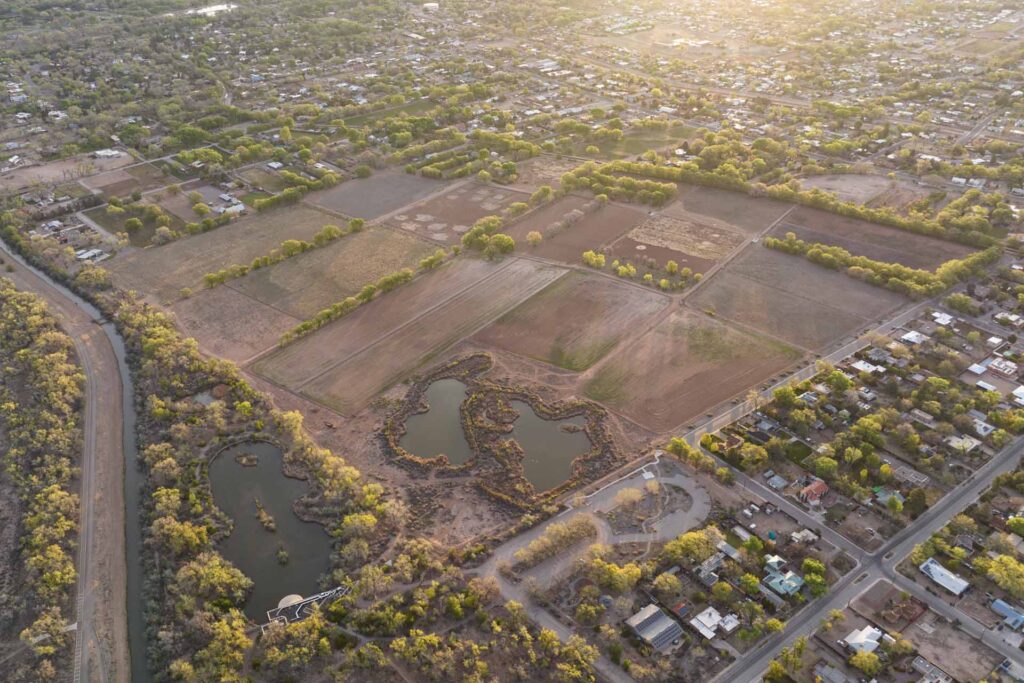
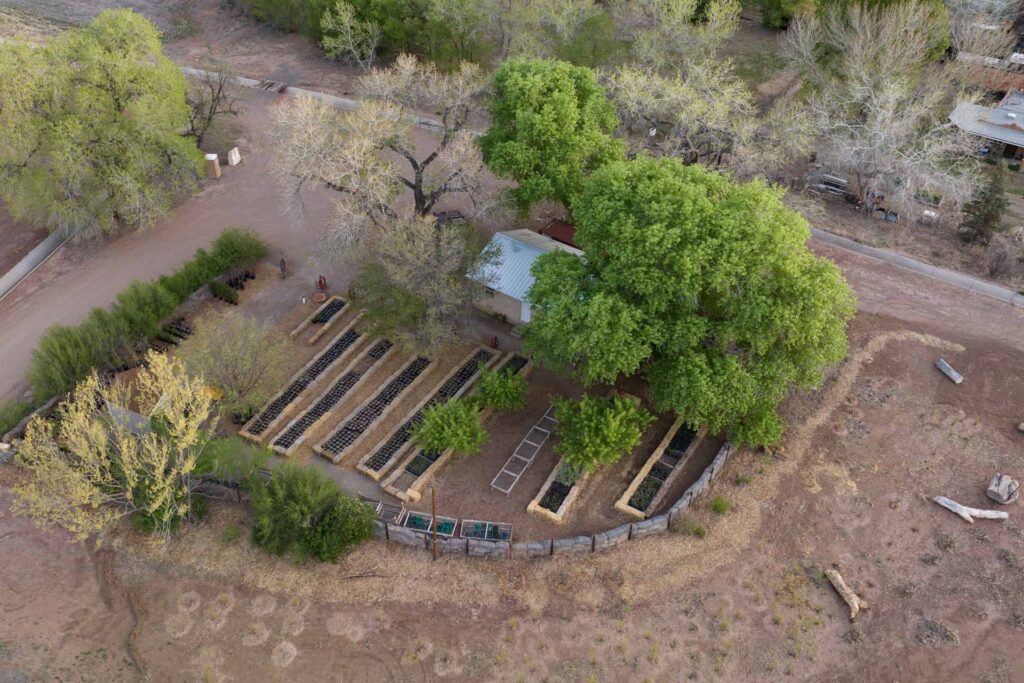
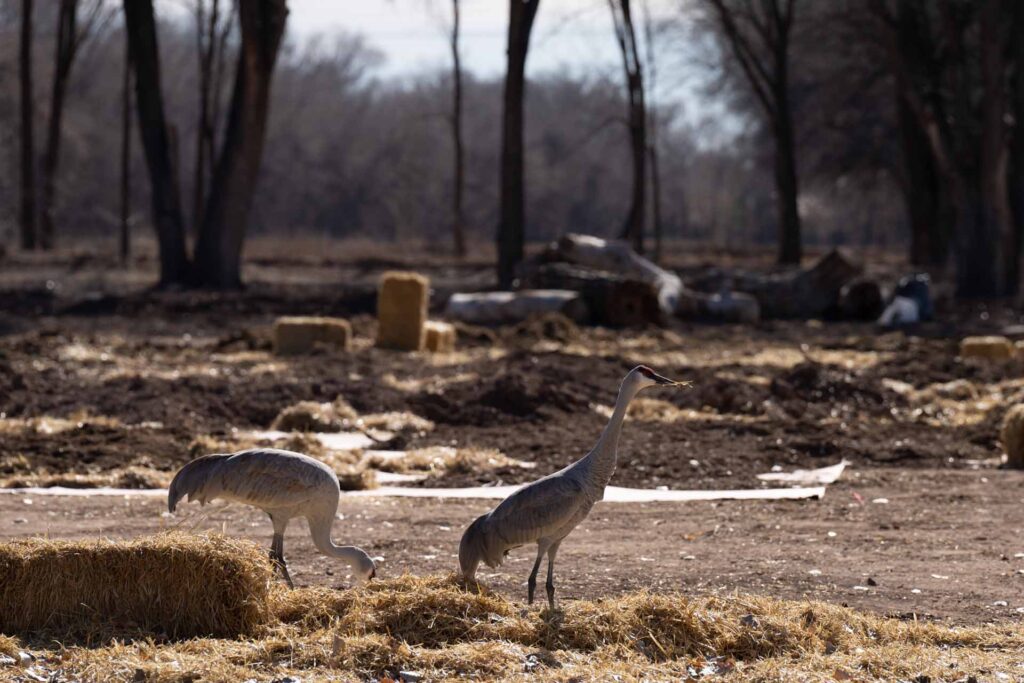
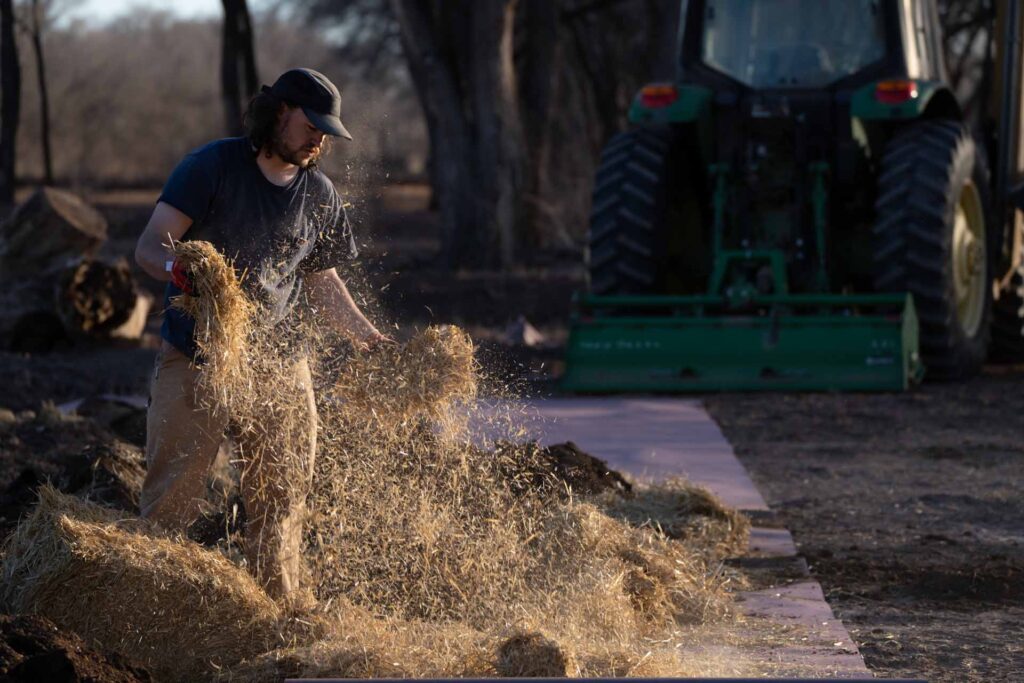
Abe Aufdermauer sheet mulching with paper, straw and compost at Candelaria Nature Preserve.
